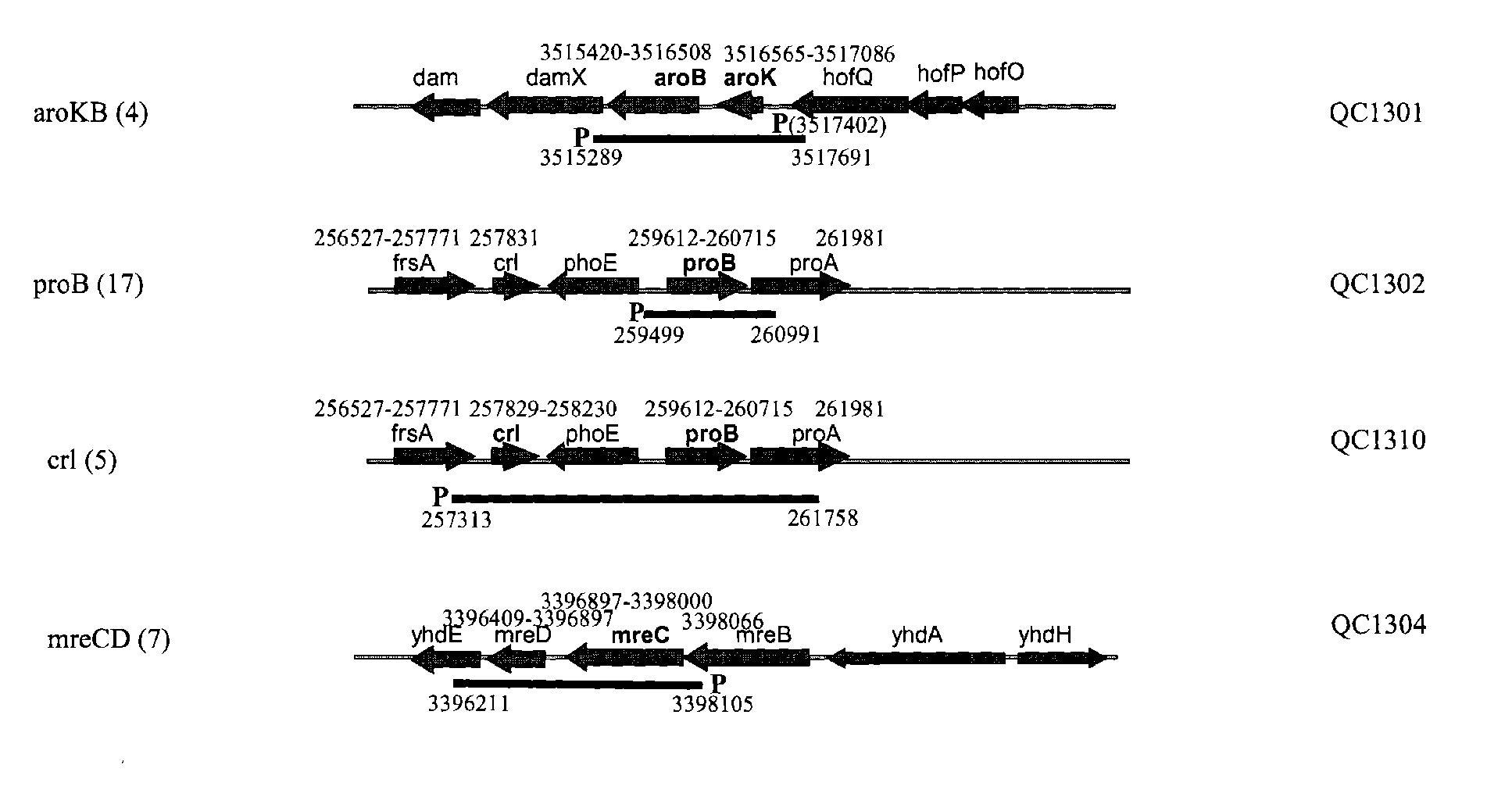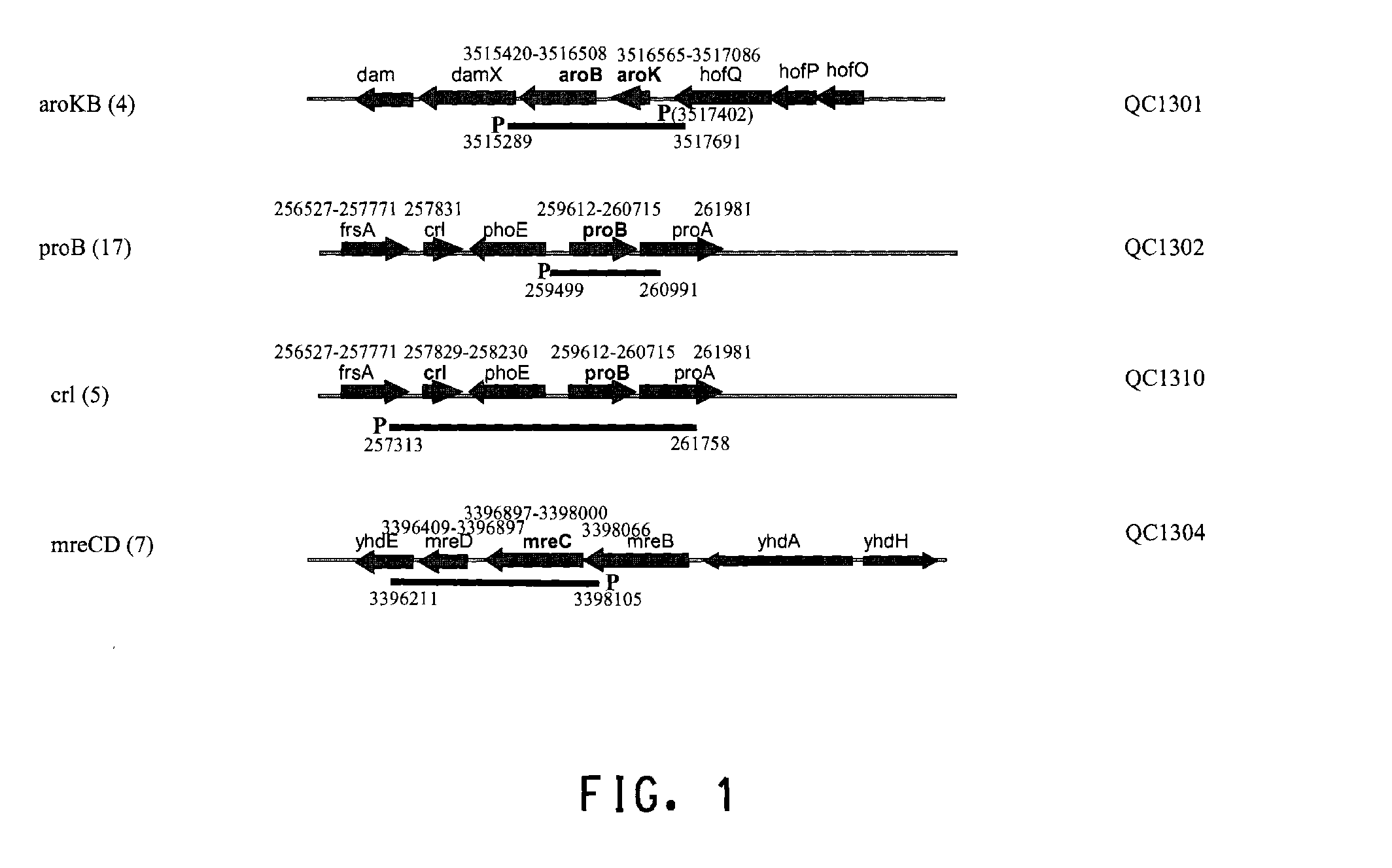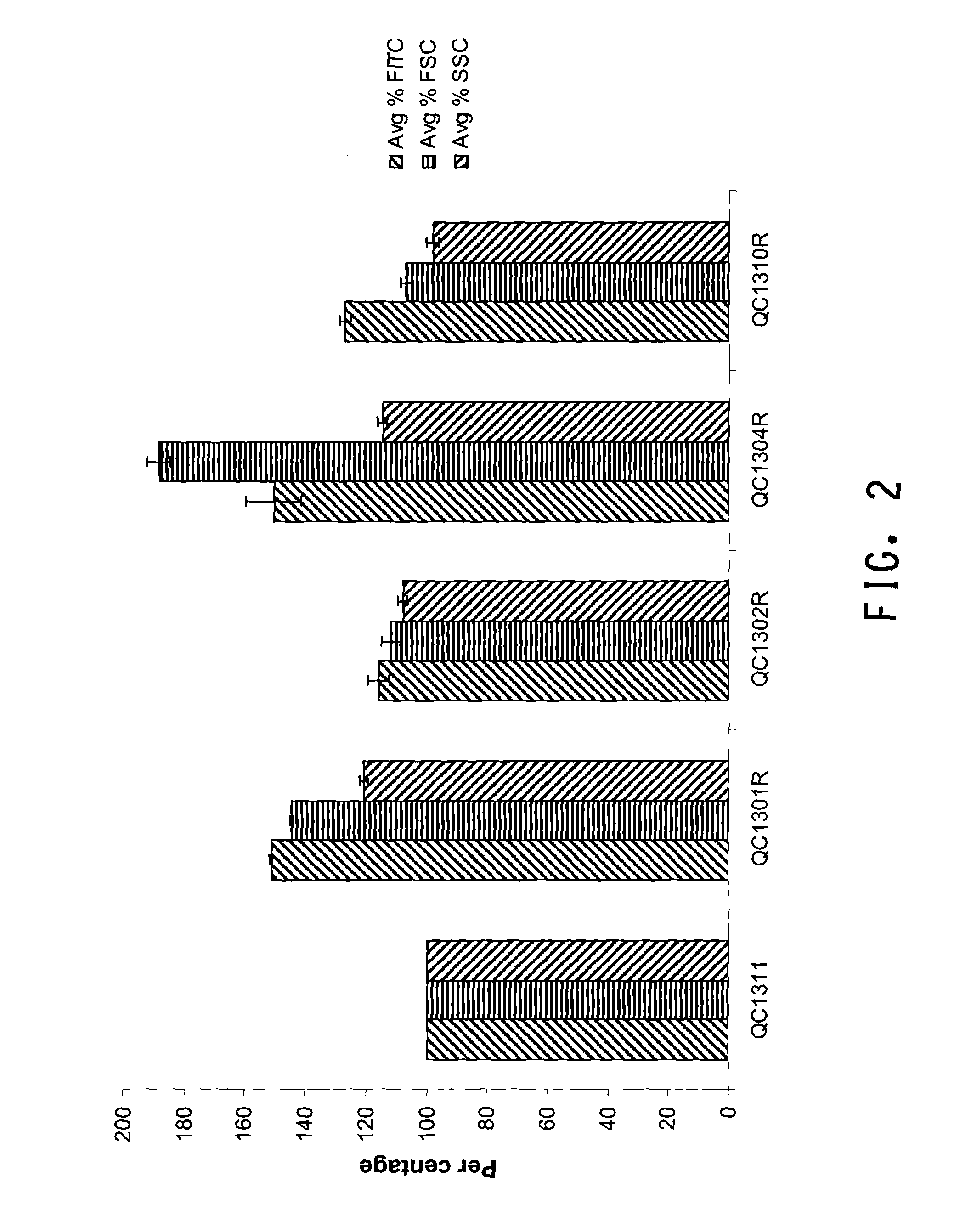Genes that increase peptide production
a peptide and gene technology, applied in the field of gene-based peptide generation, can solve the problems of limited production capacity, high cost or time-consuming methods, and peptides produced in a cellular environment are susceptible to degradation, and achieve the effect of increasing recombinant peptide production
- Summary
- Abstract
- Description
- Claims
- Application Information
AI Technical Summary
Benefits of technology
Problems solved by technology
Method used
Image
Examples
example 1
Construction of the Shotgun Expression Library of E. coli ATCC® 47076™
[0181]This example describes construction of a shotgun expression library of E. coli ATCC® 47076™ in a peptide production strain, which the produced fusion peptide contained the tetracysteine tag (CCPGCC; SEQ ID NO: 1) that allowed specific labeling of the fusion peptide.
[0182]A shot-gun library of random genomic fragments of E. coli MG1655 (ATCC® 47076™) was constructed on a broad-host-range vector pBHR1, which carries a kanamycin resistant marker and is compatible with the ColE1-based peptide expression plasmid. A set of multiple cloning sites (MCS) was first introduced into pBHR1 by annealing two oligonucleotides, RI linker Top ((5′-aattcgctagcgtcgacactagtc-3′; SEQ ID NO: 7) and RI linker Bot (5′-aattg actagtgtcgacgctagcg-3′; SEQ ID NO: 8), and cloned the annealed oligos into the EcoRI site of pBHR1. The resulting pBHR1 vector containing the MCS (SpeI-SalI-NheI-EcoRI) was designated as pDCQ601. The pDCQ601 vect...
example 2
Sorting of QC1300 Library by FACS
[0183]QC1300 library clones contained the peptide production plasmid pLR199, which has a tetracysteine tag (CCPGCC, SEQ ID NO: 1) inserted into the fusion peptide IBT139-HC776124 to form fusion peptide IBT139-CCPGCC-HC776124 (SEQ ID NOs: 5 and 6) (see co-pending U.S. patent application Ser. No. 11 / 782,836). The fusion peptide was produced as inclusion bodies in E. coli via the inclusion body promoting sequence IBT139 (SEQ ID NO: 3) fused at the N-terminus of the peptide of interest HC776124 (SEQ ID NO: 4). Specific labeling of the fusion peptide could be achieved by biarsenical ligands binding to tetracysteine tag. The fluorescein derivative with two As(III) substituents, FlAsH-EDT2 (LUMIO™ Green), only fluoresces after the arsenics bind to the cysteine thiols in the target fusion peptide. The LUMIO™ reagents were obtained from Invitrogen (Carlsbad, Calif.).
[0184]The QC1300 library cells were labeled using TC-FlAsH™ In-Cell tetracysteine tag detectio...
example 3
Sequencing and Confirmation of Genes in the Sorted Clones
[0186]Several hundred colonies obtained from round 4 and round 6 sortings (Table 1) were screened by PCR first for the presence of the insert on the library plasmids. The clones containing the insert were then sequenced from both ends of the insert to map the insert fragment to the E. coli genome (GENBANK®Accession No. 000096; the complete genome sequence of Escherichia coli strain K-12 substrain MG1655). Among approximately 200 sequenced clones, QC1301 was isolated 4 times which contained the intact aroKB genes with its native promoter. QC1302 was isolated 17 times which contained the intact proB gene and partial proA gene. QC1310 was isolated 5 times which contained the crl gene and the proB gene. QC1304 was isolated 7 times which contained the intact mreCD genes. The genetic organization of the regions and the exact location of the fragments contained on the plasmids were shown in FIG. 1. The sequences of several of the ide...
PUM
| Property | Measurement | Unit |
|---|---|---|
| length | aaaaa | aaaaa |
| general structure | aaaaa | aaaaa |
| structure | aaaaa | aaaaa |
Abstract
Description
Claims
Application Information
 Login to View More
Login to View More - R&D
- Intellectual Property
- Life Sciences
- Materials
- Tech Scout
- Unparalleled Data Quality
- Higher Quality Content
- 60% Fewer Hallucinations
Browse by: Latest US Patents, China's latest patents, Technical Efficacy Thesaurus, Application Domain, Technology Topic, Popular Technical Reports.
© 2025 PatSnap. All rights reserved.Legal|Privacy policy|Modern Slavery Act Transparency Statement|Sitemap|About US| Contact US: help@patsnap.com



